Strategies for a Healthier Work Environment
The National Institute of Health has designated April as Stress Awareness Month. In today’s fast-paced world, stress and anxiety have become all too common, particularly in the workplace. The pressure to meet deadlines, navigate office politics, and juggle personal and professional responsibilities can take a toll on even the most resilient individuals. Understanding the difference between stress and anxiety is crucial in addressing these issues effectively.
Stress vs. Anxiety: What’s the Difference?
Stress is a natural response to external stimuli, such as a looming deadline or a challenging project. It often manifests as feelings of tension, worry, and uneasiness. While stress can be both positive and negative, motivating us to accomplish tasks or causing sleepless nights, it typically dissipates once the stressor is resolved.
On the other hand, anxiety is an internal reaction, characterized by persistent feelings of apprehension and dread. Unlike stress, which is tied to specific situations, anxiety tends to linger even in the absence of an immediate threat. It can interfere with daily life, affecting productivity, concentration, and overall well-being.
Recognizing the Symptoms
Both stress and anxiety can manifest in similar ways, affecting both the mind and body. Some common symptoms include:
- Excessive worry
- Uneasiness
- Tension headaches or body pain
- High blood pressure
- Loss of sleep
Acknowledging these symptoms is the first step toward addressing stress and anxiety in the workplace.
Addressing Stress and Anxiety in the Workplace
Creating a supportive work environment that prioritizes employee well-being is essential for managing stress and anxiety effectively. Here are some strategies that employers and employees can implement:
- Open Communication
- Encourage employees to express their concerns and feelings openly. Create channels for feedback and ensure that employees feel heard and valued.
- Provide Resources
- Offer resources such as counseling services, stress management workshops, or access to mental health professionals. Educate employees about the importance of self-care and healthy coping mechanisms.
- Set Realistic Expectations.
- Avoid setting unrealistic deadlines or workloads that contribute to excessive stress. Encourage a healthy work-life balance and discourage a culture of overwork.
- Invest in a Positive Work Culture
- Cultivate a supportive and inclusive work environment where employees feel empowered to seek help without fear of judgment. Recognize and celebrate achievements, both big and small.
- Encourage Breaks and Mindfulness
- Encourage employees to take regular breaks throughout the day and practice mindfulness techniques such as deep breathing or meditation to manage stress levels.
- Lead by Example
- Managers and leaders should lead by example by prioritizing their own well-being and demonstrating healthy coping strategies. Encourage a culture of transparency and vulnerability.
- Provide Flexibility
- Offer flexible work arrangements such as remote work options or flexible hours to accommodate individual needs and preferences.
- Offer Training and Support
- Provide training on stress management techniques and mental health awareness to equip employees with the tools they need to cope with stress effectively.
By implementing these strategies, employers can create a supportive work environment where employees feel valued, respected, and equipped to manage stress and anxiety effectively.
Stress and anxiety in the workplace are significant challenges that can impact employee well-being and productivity. By recognizing the symptoms, understanding the difference between stress and anxiety, and implementing strategies to address these issues, employers can create a healthier work environment where employees can thrive. Investing in employee well-being not only benefits individuals but also contributes to a more engaged, motivated, and resilient workforce.

